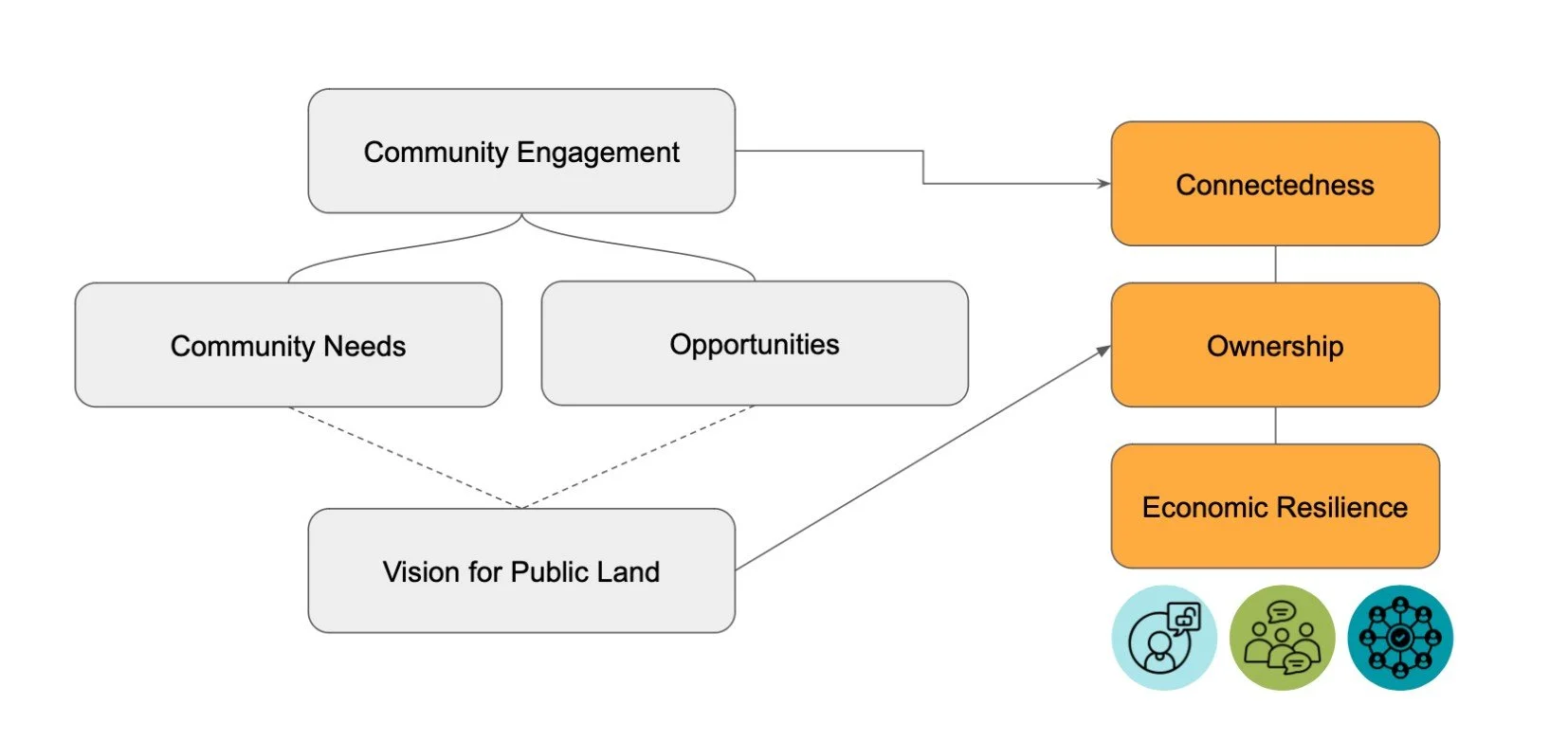Objective 1: Enhance Community Engagement and Establish Community Ownership
A resident-driven approach to development, grounded in community capacity building and collective ownership, is the key to equitable revitalization in Coney Island. By building local leadership, fostering partnerships, and launching a pilot community land trust project, Coney Island can develop spaces that reflect resident priorities, promote long-term affordability, and generate sustainable local revenue.
Together, these three recommendations—creating a Community Dashboard, identifying vacant public land, and supporting resident-driven development— work together to strengthen connectedness, empower residents, and position public land as a driver for equity, ownership, and economic resilience in Coney Island.
1.3 - Support and Resource Community-Led Development
What is the vision?
Building on the identification of vacant lots (Recommendation 1.2), the next step is to engage residents to lead development efforts. By fostering partnerships with nonprofit developers and establishing a Coney Island Community Land Trust (CLT), vacant spaces can be transformed into community-owned assets that reflect local priorities, ensure long-term affordability, and build economic resilience.
Organize residents around development.
Partner with nonprofit developers and technical assistance agencies to envision community-focused spaces.
Launch a Coney Island Community Land Trust (CLT) to ensure long-term community control and affordability.
The vision emphasizes:
Resident Leadership: Local capacity-building will equip residents to meaningfully participate and lead the development processes.
Community Ownership: A CLT model ensures that land remains under community control, preventing displacement and promoting affordability.
Economic Benefits: Community-owned assets generate local revenue, reduce reliance on external actors, and foster self-sufficiency
How to Get it Done
To make community-led development a reality, it necessary to first build local capacity through training and governance structures. Partnering with nonprofit developers will bring technical expertise, and connecting with the local CLT network through the New York City Community Land Initiative will assist with starting a Coney Island CLT. Finally, a pilot project can showcase the benefits of this approach.
Build Capacity for Community Leadership:
Host training workshops on CLTs, development processes, and governance.
Establish a community advisory board to oversee projects.
Collaborate with Experienced Nonprofit Developers and the CLT network:
Launch a Pilot Project:
Choose one vacant lot for a pilot project to demonstrate feasibility and build trust.
Stakeholders
Community Members:
Participate in capacity-building workshops.
Serve on advisory boards to ensure development reflects resident priorities.
Advocate for community ownership of assets.
CINRC:
Act as a convener to bring together residents, developers, and city partners.
Coordinate workshops, facilitate training sessions, and establish governance structures.
Nonprofit Developers:
Provide technical expertise in design, construction, and financing for community-led projects.
Collaborate on actionable, resident-led development plans.
City Agencies:
Offer technical guidance on zoning, land transfers, and feasibility studies.
Support the legal and administrative steps to create a CLT.
Potential Partners:
Cooper Square CLT: Model for success and mentorship.
Pratt Center for Community Development: Capacity-building and technical assistance.
New York City Community Land Initiative (NYCCLI): Support in launching and growing CLTs.
Local Initiatives Support Corporation (LISC): Provide funding and technical expertise.
New Economy Project: Assist with financial strategies for sustainable community ownership.
